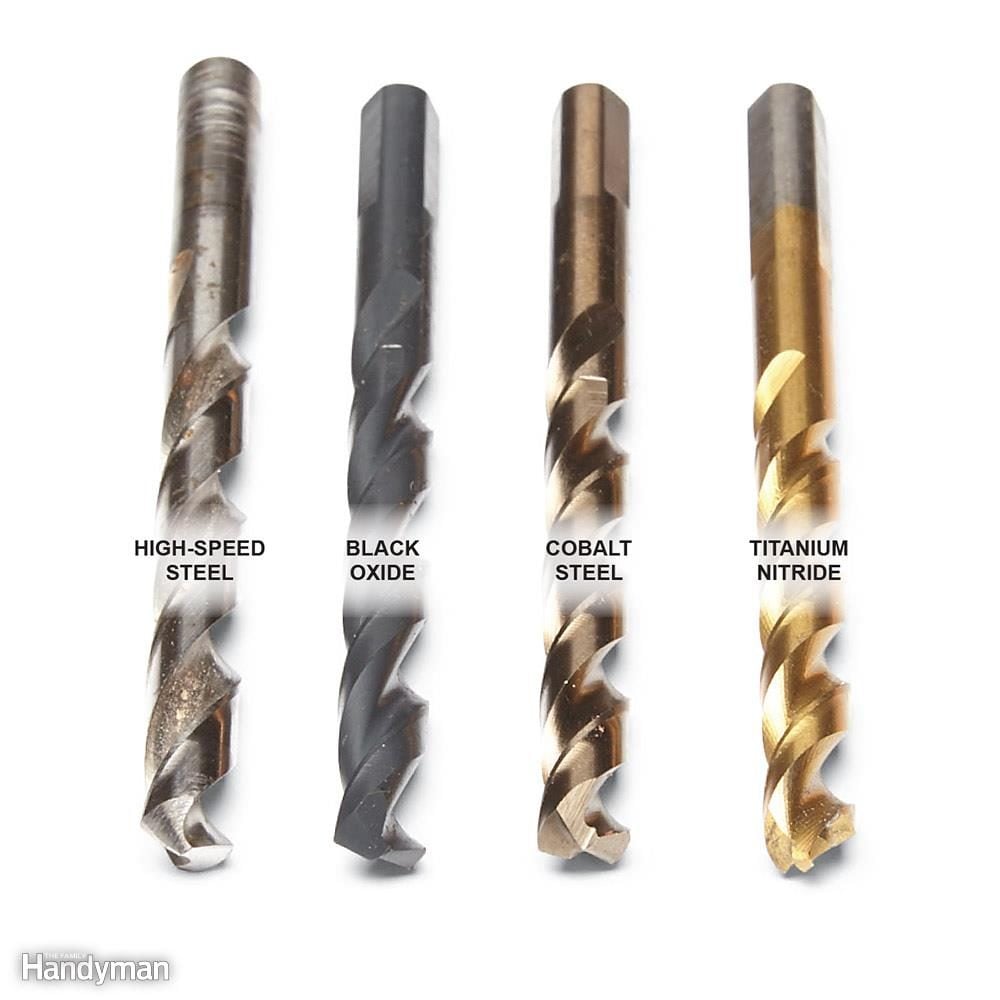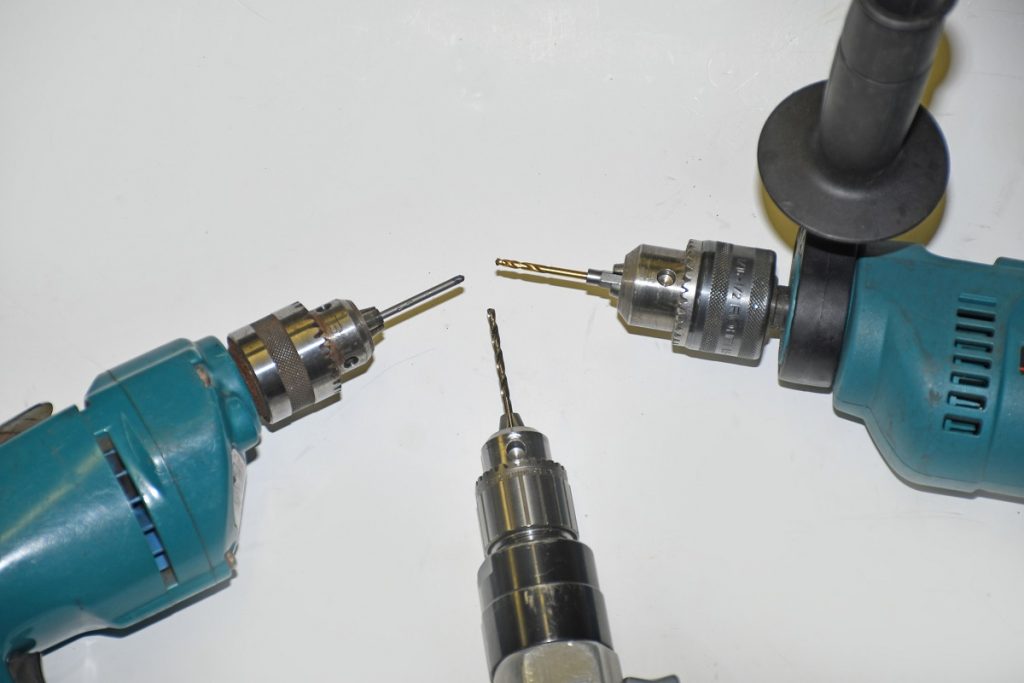Have you ever wondered if you can drill through a drill bit? Well, you’ve come to the right place to find out! 🤔💡
Drilling through a drill bit might sound like a strange idea, but it’s actually a common question among those new to DIY projects. So, can you do it? Let’s explore that together!
In this article, we’ll dive into the world of drill bits and whether they can withstand the force of another drill. So, get ready to uncover the answer to this intriguing question! 🛠️🔍

Can You Drill Through a Drill Bit?
Welcome to an in-depth exploration of the question: Can you drill through a drill bit? In this article, we will delve into the science behind drilling, the composition of drill bits, and whether it is possible to drill through a drill bit itself. So, put on your safety goggles and let’s get drilling!
The Composition of Drill Bits
Before we can determine whether it is possible to drill through a drill bit, it’s important to understand what drill bits are made of. Most drill bits are composed of high-speed steel (HSS) or carbide. HSS drill bits are made from a combination of steel and other metals, such as tungsten, molybdenum, and cobalt, which give them strength and durability. On the other hand, carbide drill bits are made from a compound called tungsten carbide, which is known for its hardness and resistance to heat.
These materials are carefully chosen for their ability to withstand the high temperatures and forces generated during drilling. The tip of the drill bit, also known as the cutting edge or point, is usually shaped to optimize drilling performance. It may be pointed, flat, or have specific geometries depending on the material being drilled and the type of hole being created.
Now that we understand the materials and design of drill bits, let’s explore whether it is possible to drill through a drill bit itself.
Can You Drill Through a Drill Bit? The Science Behind Drilling
Drilling is a process that involves creating a hole in a material by removing material in the form of chips or swarf. The drill bit acts as a cutting tool, rotating at high speeds and applying force to the workpiece. As the drill bit cuts into the material, the chips are carried away by the flutes, or grooves, on the drill bit.
When drilling through a material such as wood, metal, or plastic, the cutting edges of the drill bit remove material by shearing or scraping. The drill bit’s sharp edges and the rotational force applied by the drill help to break up the material and create the hole.
However, when it comes to drilling through a drill bit itself, the situation is quite different. The material of the drill bit is specifically chosen for its hardness and resistance to wear. Attempting to drill through a drill bit with another drill bit would require an extraordinary amount of force and would likely result in damage to both drill bits.
How to Properly Use a Drill Bit
While drilling through a drill bit may not be possible, it’s important to understand how to properly use a drill bit to achieve optimal results. Here are some tips for using a drill bit:
1. Choose the Right Drill Bit
Different materials require different types of drill bits. Select a drill bit that is suitable for the material you are drilling, whether it’s wood, metal, concrete, or other materials. Using the wrong drill bit can lead to poor results or damage to the drill bit.
2. Drill at the Right Speed
The speed at which you drill can affect the quality of the hole and the life of the drill bit. Higher speeds are typically used for softer materials, while slower speeds are better for harder materials. Refer to the manufacturer’s guidelines for the recommended drilling speed for the specific drill bit and material.
3. Apply Steady Pressure
When drilling, apply a consistent and steady pressure to the drill. Too much pressure can cause the drill bit to overheat or become dull, while too little pressure can result in a slow drilling process and potential damage to the drill bit.
4. Use Cooling Lubricants
For materials that generate a significant amount of heat when being drilled, such as metal, it is recommended to use a cooling lubricant. This helps to reduce heat buildup and prolong the life of the drill bit.
Common Drill Bit Materials
A variety of materials are used in the manufacturing of drill bits. Each material has its own unique properties and is suited for different drilling applications. Let’s take a closer look at some common drill bit materials:
1. High-Speed Steel (HSS)
High-Speed Steel (HSS) drill bits are the most common type of drill bit. They are made from a combination of steel and other metals, such as tungsten, molybdenum, and cobalt. HSS drill bits are known for their durability and ability to withstand high temperatures.
2. Carbide Drill Bits
Carbide drill bits are made from a compound called tungsten carbide, which is known for its hardness and resistance to heat. These drill bits are best suited for drilling through hard materials like concrete or metal.
3. Cobalt Drill Bits
Cobalt drill bits are made from a cobalt alloy, which gives them extra strength and heat resistance. These drill bits are ideal for drilling through stainless steel and other sturdy materials.
4. Titanium Drill Bits
Titanium drill bits have a titanium coating that helps to reduce friction and heat during drilling. They are suitable for drilling through wood, plastic, and mild steel.
Conclusion
In conclusion, attempting to drill through a drill bit is not a viable option. The materials and design of drill bits are specifically chosen to withstand the rigors of drilling and cutting through various materials. To achieve optimal results when using a drill bit, it is important to select the right drill bit for the material being drilled, use the proper drilling techniques, and maintain the drill bit’s sharpness. Remember to always prioritize safety and follow the manufacturer’s guidelines for the specific drill bit and drilling application. Happy drilling!
Key Takeaways: Can You Drill Through a Drill Bit?
- It is not possible to drill through a drill bit because it is made of hardened steel.
- Drill bits are designed to drill into materials, not be drilled through themselves.
- Attempting to drill through a drill bit can damage the bit and render it ineffective.
- When drilling, always ensure the drill bit is sharp and compatible with the material you are working with.
- Remember to use proper safety precautions, such as wearing protective eyewear and securing your workpiece, when using a drill.
Frequently Asked Questions
Have you ever wondered if it’s possible to drill through a drill bit? We’ve compiled some frequently asked questions to help shed light on this subject. Check out the answers below!
1. Can a drill bit be used to drill through another drill bit?
While it may seem counterintuitive, you generally cannot drill through a drill bit using another drill bit. Drill bits are designed to cut into materials, not through other hardened steel bits. Attempting to drill through a drill bit is likely to damage both the bit being drilled and the bit doing the drilling. It’s best to avoid this practice and use the appropriate bit for the job.
If you find yourself needing a larger hole, consider using a step drill bit or a hole saw specifically designed for the size you require. These tools are engineered to create larger holes without damaging the drill bit or compromising the integrity of your work.
2. Is it possible to sharpen a dull drill bit?
Yes, it is possible to sharpen a dull drill bit. Dull bits can result in inefficient drilling and can put unnecessary strain on your drill. There are several methods you can use to sharpen a drill bit, including using a bench grinder, a drill bit sharpening tool, or a sharpening stone. The key is to ensure that you maintain the proper angle and remove enough material to restore the cutting edge.
It’s important to note that sharpening drill bits requires some skill and practice. If you’re unsure about sharpening your drill bits, it’s recommended to seek the assistance of a professional or invest in a new set of bits. Properly maintaining your drill bits by cleaning them after use and storing them in a dry place can help prolong their lifespan and reduce the need for frequent sharpening.
3. Are all drill bits suitable for drilling through metal?
Not all drill bits are suitable for drilling through metal. When it comes to drilling through metal, high-speed steel (HSS) drill bits are commonly used. HSS bits are made from a special type of steel that has been hardened to withstand the heat generated during metal drilling. They are designed to cut through metal with ease and precision.
Other drill bits, such as wood or masonry bits, are not intended for metal drilling and may become dull quickly or even break when used on metal surfaces. It’s important to choose the right drill bit for the material you are working with to achieve the best results and avoid damaging your drill or workpiece.
4. Can a drill bit be used to drill into concrete?
While some drill bits are designed specifically for drilling into concrete, standard drill bits are not suitable for this task. Concrete drill bits, also known as masonry bits, have a specially designed tip that allows them to cut through the tough and abrasive nature of concrete. These bits are typically made of carbide or high-speed steel with a carbide tip.
If you attempt to use a regular drill bit on concrete, you risk damaging the bit and potentially overheating your drill motor. If you need to drill into concrete, invest in a proper concrete drill bit and use it with a hammer drill or rotary hammer for optimal performance.
5. Why do drill bits have different shapes and designs?
Drill bits come in various shapes and designs to accommodate different drilling tasks and materials. The shape and design of a drill bit determine its cutting ability, chip evacuation, and overall performance. For example, twist bits are the most common type of drill bits and are suitable for general drilling tasks in wood, metal, and plastic.
Other types of drill bits include spade bits for fast hole drilling in wood, auger bits for deep and large-diameter holes, step bits for incremental hole sizes, and forstner bits for precise woodworking applications. Each drill bit type has specific features that make it well-suited for its intended use, so it’s important to choose the appropriate bit for your project to ensure optimal results.

Summary
So, can you drill through a drill bit? The answer is no. Drill bits are designed to drill into materials, not to be drilled through. They are made of hard materials like steel or carbide, which can damage the drill if you try to drill through them. Therefore, it’s important to use drill bits for their intended purpose and avoid drilling through them.
Instead of drilling through a drill bit, it’s recommended to use the appropriate drill bit for the material you want to drill into. Different types of drill bits are designed for specific tasks, such as drilling into wood, metal, or concrete. By using the right drill bit and drilling at the correct speed and pressure, you can achieve the best results and prolong the lifespan of your drill. So remember, use drill bits for drilling, not as targets for drilling through!
